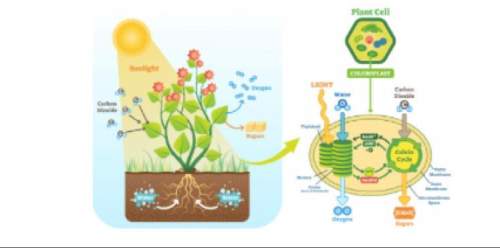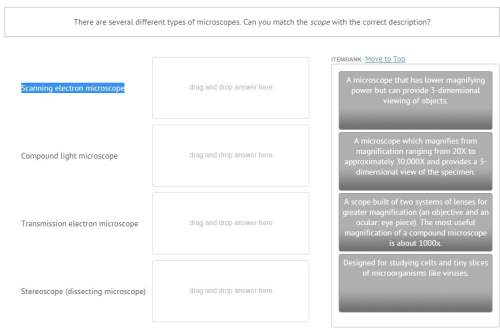
Biology, 18.10.2019 06:30 alinegonzalez0027
Review the schematic diagram of photosynthesis and the involvement of the chloroplast in this process. we know that the purpose of photosynthesis is to convert light energy into usable chemical energy. that process takes several steps. one of the first steps in this energy conversion process is what?
a) energy from sunlight is converted into a usable form of chemical energy, glucose.
b) stored chemical energy in the forms of atp and nadph are transferred to the grand in order to produce glucose.
c) energy from sunlight is absorbed by the thylakoid membranes, used to decompose water and transform carbon dioxide.
d) energy from sunlight is absorbed by chlorophyll and converted into stored chemical energy, in the form of nadph and atp.


Answers: 2
Another question on Biology

Biology, 21.06.2019 13:00
Which of the following are energy solutions that release pollution into the air>
Answers: 3

Biology, 21.06.2019 20:10
Chalk is an ionic compound. which is a property of all ionic compounds that makes chalkboard? particularly useful for writing on a a high melting point hardness and brittleness inability to dissolve in water a multicolored appearance
Answers: 1

Biology, 22.06.2019 01:30
Scenario 5 1) take 10 red and 10 black beans and place them, mixed, on the table. record the starting phenotype # and frequencies (% of your total population) of your starting population in the table provided (generation 0). 2) act as a predator. “capture” as many organisms as you can until you have reduced the population to three organisms. put them aside. at this point, the predators die. 3) the remaining organisms each produce 2 clonal offspring. multiply your organisms accordingly and allow them to mix on the table. calculate and record the resultant phenotype # and frequencies (% of your total population) of your population in the table provided (generation 1). 4) repeat the reproduction event, allowing each of your organisms to produce 2 clonal offspring. calculate and record the resultant phenotype # and frequencies (% of your total population) of your population in the table provided (generation 2). 5) repeat the reproduction event, allowing each of your organisms to produce 2 clonal offspring. calculate and record the resultant phenotype # and frequencies (% of your total population) of your population in the table provided (generation 3).
Answers: 1

Biology, 22.06.2019 06:30
Study the picture of the ocean. which is the best example of an organism’s niche shown in the picture? a. the environment contains several of the same species of coral. b. the shallow area of the ocean meets the needs of the coral and the fish. c. the ocean has fish and coral that live in the same area. d. the coral take in food from the water and provide shelter for the fish.
Answers: 2
You know the right answer?
Review the schematic diagram of photosynthesis and the involvement of the chloroplast in this proces...
Questions




Mathematics, 04.08.2021 01:00

Mathematics, 04.08.2021 01:00

Mathematics, 04.08.2021 01:00









Advanced Placement (AP), 04.08.2021 01:00









